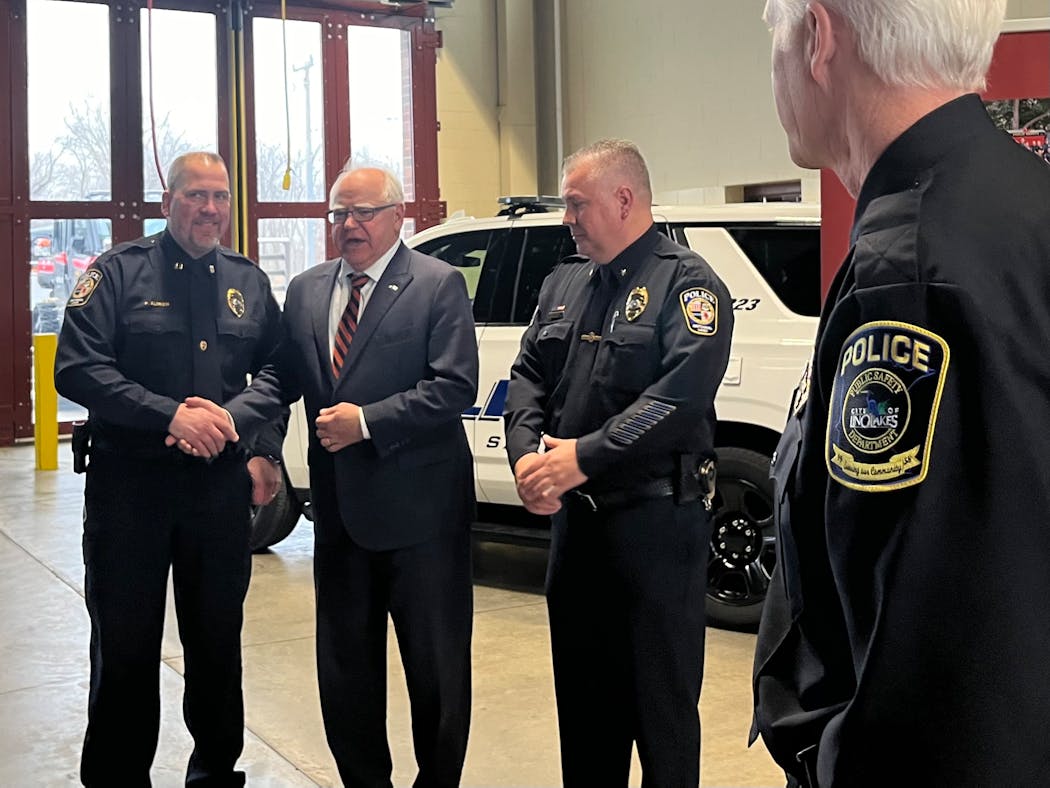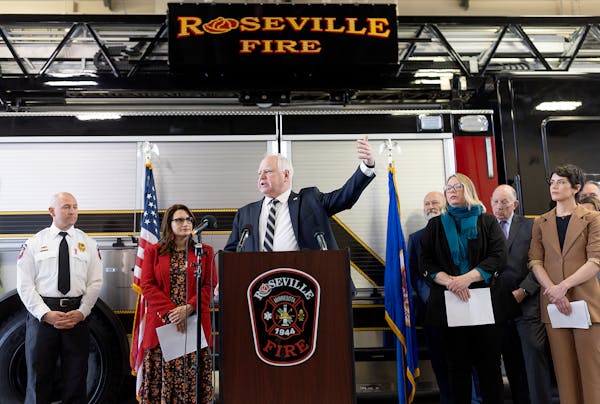Public safety departments across Minnesota are getting an infusion of $300 million in state money, boosting everything from police officers' mental health to firefighter equipment.
The one-time aid that the Legislature approved and Gov. Tim Walz signed into law earlier this year will be disbursed to cities, counties and tribes next week. The amounts, based on the population of each entity, range from a few thousand dollars for small cities to $19 million for Minneapolis.
There are few restrictions on the new funding, so public safety departments can use the money for whatever they need. Statewide agencies, including the State Patrol and the Bureau of Criminal Apprehension, received increased funding separate from the $300 million appropriation.
"This is important work and, we've seen over the last year, it's also dangerous work," Walz said, standing next to a shiny $2 million firetruck in Lino Lakes. "We were hearing from folks saying, 'Give us flexibility ... and don't make our communities have to decide between fixing a street or funding a school or providing public safety.'"
Some law enforcement leaders on Thursday said the money comes at a critical time when agencies are grappling with rising costs and widespread staffing shortages. The state has never distributed this much money to public safety departments in a one-time funding boost, although the Legislature also had a historic budget surplus last session.
"This has never been done before," said Sen. Heather Gustafson, DFL-Vadnais Heights. "That was the key for us, is making sure that we were listening to what everybody needed and [had] local control. Every community is different, everybody has different needs."
In Lino Lakes, the nearly $1 million will go toward paying down the cost of a new firetruck and adding training and fire-suppression equipment. In White Bear Lake, the Fire Department will buy a new ambulance and thermal-imaging equipment to locate victims in a fire, and add more training and mental health services for firefighters.
And in Bloomington, the nearly $4 million will help the city start a pilot program this month, offering free in-home therapy to people in a mental health crisis in hopes of reducing the number of repeat police calls. Chief Booker Hodges said there's no program like it in the country.
"If we didn't have this funding, we wouldn't be able to do that," he said, adding that the state money will also help hire more officers to prepare for coming retirements.
Centennial Lakes Police Chief James Mork said his department, which serves three small north metro cities, doesn't have the large tax base Bloomington has, so the extra state money is helpful. The aid will go toward buying speed signs to deter speeding motorists and bolstering mental health for officers.
The 16-officer department will also increase its ranks for the first time in about 20 years, adding one officer.
"While some people might not think that's a big addition, when your family member is having a heart attack or maybe is no longer breathing, when you dial 911, having another car on that can respond to that emergency medical and help save a life is critical," he said.
Walz said departments will have to adjust for the fact that the new funding is a one-time influx, even if their expenses come with recurring costs. Walz said he pushed for the public safety aid the last two years but couldn't get his plan through the Legislature until this year when Democrats controlled both the House and Senate.
Rachel Aplikowski, spokeswoman for the Senate GOP, said Senate Republicans opposed the broader DFL bill because of other measures, not the $300 million for public safety departments, and had their own proposals to support public safety agencies.
"My guess is, if we do this again because it's super popular and it's working amongst folks, we'll get [bipartisan] buy-in," Walz said. "I hope it sends a message to public safety folks that this is a priority."
Brooklyn Park police make arrest after asking for help in search for man suspected of sexual assault at gunpoint

Attorney Tayler Rahm wins GOP backing in battleground Second District
North Oaks withdraws request for density exemption from Met Council



